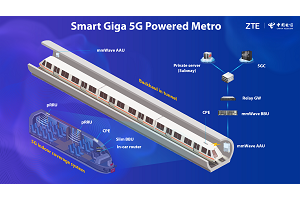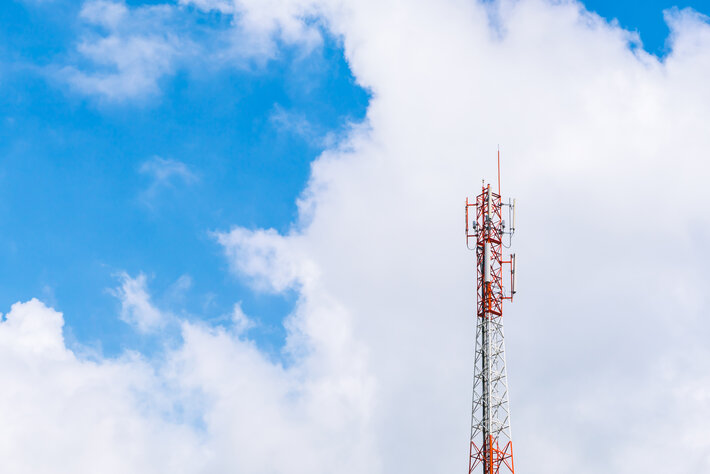ZTE Corporation, a provider of information and communication technology solutions, collaborates with China Telecom’s Shanghai branch to introduce the ‘Smart Giga 5G Powered Metro’ on Shanghai Metro Line 4. This solution delivers a gigabit experience for metro passengers, enabling HD film streaming for all users simultaneously, without any internet slowdown.
The ‘Smart Giga 5G Powered Metro’ boasts a peak rate exceeding 2.1Gbps and an average rate of 1.7Gbps+, setting a new paradigm for metro connectivity. Moreover, this initiative lays a digital foundation for smart metro operations.
To enhance 5G network coverage and elevate the user experience on the metro has become one of the crucial challenges in the industry. The conventional LCX (leaky coaxial cable) coverage solution has encountered obstacles, with network signals severely weakened inside the metro due to signal attenuation caused by the dense metal carriages and the Doppler effect resulting from the movement of the train. Moreover, the restricted availability of LCX deployment space limits the cell capacity, leading to an inability to meet the required throughput during peak traffic hours in the mornings and evenings.
Regarding the special application scenario for the metro, China Telecom’s Shanghai branch collaborates with ZTE to build the ‘Smart Giga 5G Powered Metro’ with ‘Metro 5G coverage with vehicle-mounted equipment + high-speed 5G backhaul’. A complete 5G indoor coverage system is deployed inside the metro carriage using ZTE’s BBU (baseband unit) + pRRU (remote radio unit) two-level architecture.
5G AAUs are deployed in tunnels working as the high-speed backhaul, receiving data from CPEs (customer premises equipment) both ends of the train simultaneously. The total backhaul can deliver up to 15Gbps downlink and 2Gbps uplink. Consistent 5G signals is guaranteed, to provide mobile users with high-speed experiences.
The solution has been commercialised on Shanghai Metro Line 4, bringing forth four benefits:
Improved user experience: The user experience has seen an improvement of almost three times. In comparison to the traditional LCX solution’s 600Mbps speed rate, Line 4 users now get a speed of 2.1Gbps and an average speed of 1.7Gbps.
Unified network for diverse demands: This solution caters to both mobile users and smart metro operations, promoting the development of smart cities by enabling safer and more intelligent metro operations.
Cost-effectiveness and sustainability: Operators can minimise their investment while creating a greener, lower-carbon network through backhaul sharing. Approximately 20% of the investment has been saved on Metro Line 4 compared to the traditional LCX solution. Furthermore, it is estimated that 3.7 million kWh of electricity or 2,200 tons of carbon emissions will be saved annually.
Streamlined network deployment: By eliminating the need to lay LCX, the complexity of metro network deployment has been greatly reduced. For instance, Line 4’s construction time has been halved, completing the project in just six months, instead of one year.
The ‘Smart Giga 5G Powered Metro’ is dedicated to developing passenger-focused and service-focused smart metro applications. With the ongoing iteration and advancement of communications technologies, China Telecom’s Shanghai branch will continue to collaborate with ZTE in more fields, focusing on new-generation information technologies such as industrial internet, Internet of Things, cloud computing, big data, and artificial intelligence.
Comment on this article below or via Twitter: @VanillaPlus OR @jcvplus






